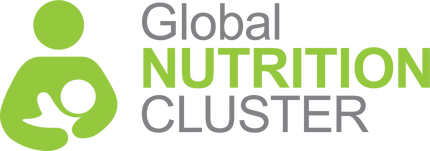Request support on coordination, information management, integration for nutrition outcomes or technical nutrition in emergencies assistance.
التماس الدعم لتنسيق التغذية وإدارة المعلومات والتغذية في حالات الطوارئ
Demander un appui pour la coordination de la nutrition, la gestion de l'information et la nutrition dans les situations d'urgence
Buscar apoyo para la coordinación de la nutrición, la gestión de la información y la nutrición en situaciones de emergencia
Solicite apoio para coordenação em nutrição, gestão de informação e nutrição em emergências

AFGHANISTAN: Humanitarian Response Plan 2018-2021 - Mid-Year Monitoring Report (Jan - Jun 2020)
Summary
After 40 years of war, annual natural disasters and persistent poverty, the people of Afghanistan have been dealt another deadly blow from COVID-19. The COVID-19 pandemic has thrown Afghanistan into an unprecedented health, social and economic crisis requiring urgent action and solidarity from the international community. With a fragile health system, a developing economy and underlying vulnerabilities, the people of Afghanistan are facing extreme consequences from the pandemic. Limited access to water and sanitation, widespread food insecurity and high rates of malnutrition are all additional complicating factors for Afghanistan.
Despite the radically changed operational context in the first half of 2020, humanitarian partners reached 6 million people or more than half (54 per cent) of those they planned to assist during the year (11.1 million people). This mid-year progress towards planned reach is roughly aligned with reach figures for the same period in previous years, despite the enormous additional need from COVID-19 and pandemic-related operational constraints. This was possible with FTS showing only 24 per cent of required funding had been received due to two main factors: 1) Substantial carry-over funds ($96m) from 2019 and 2) the implementation of a substantial number of very high-reach, low-cost activities (particularly COVID-19 awareness raising work) rather than investment in the multi-sectoral or more durable assistance approaches clusters had hoped to promote prior to the pandemic.
Humanitarian presence remained fairly steady, despite the operating constraints, with 159 partners operational in the second quarter of the year across 390 districts. This compares to 162 partners across 380 districts in the first quarter. There was a notable increase in the number of partners reporting engagement in health activities, presumably related to the pandemic. The figures demonstrate the humanitarian community’s commitment to and investment in the Afghanistan response and the partners' capacity to stay and deliver despite the simultaneous security, health and financial challenges.
This mid-year report captures progress against the revised needs and targets identified in the June 2020 revision to the Afghanistan Humanitarian Response Plan.
Response modalities and development engagement
After the outbreak of COVID-19 in Afghanistan, humanitarians worked quickly to adapt assistance modalities, employing new approaches to community engagement and service provision which balance the response to urgent humanitarian needs with COVID-19 mitigation measures. Humanitarians have adopted physical distancing and other strategies to safeguard staff and people receiving assistance. Steps have been taken at distributions to ensure large gatherings are avoided as much as possible and best practice hygiene procedures have been implemented. In some cases, double deliveries have been organised to overcome potential movement-related disruptions and reduce the number of times people need to visit distribution sites. Limited availability of personal protective equipment (PPE) for frontline staff due to global shortages has presented an ongoing challenge to those providing and receiving assistance.
The virus has also reshaped the humanitarian operating environment in Afghanistan demanding a deeper and wider response from aid agencies using flexible new approaches to expand reach and ensure life-saving support to pre-existing needs is not interrupted. Rising prices for key commodities and loss of jobs in the informal economy due to COVID-19 are leaving many families, especially in urban areas, in crisis and increasing debt. Loss of income and stigma for returnees are both placing increasing numbers of families at risk of eviction. In response to this new reality, humanitarians worked closely with development actors on a common needs analysis that identifies people in need of a social safety net due to COVID-19. The inclusion of the emergency social safety net figure underlines the reality that humanitarian action is just the first part of a more comprehensive package of urgent measures that is needed from the Government, supported by development actors, to ensure that vulnerable people do not slip into humanitarian need. Anticipatory development funding and action remain critical to avoiding preventable suffering and a more expensive humanitarian response in the longer-term.
